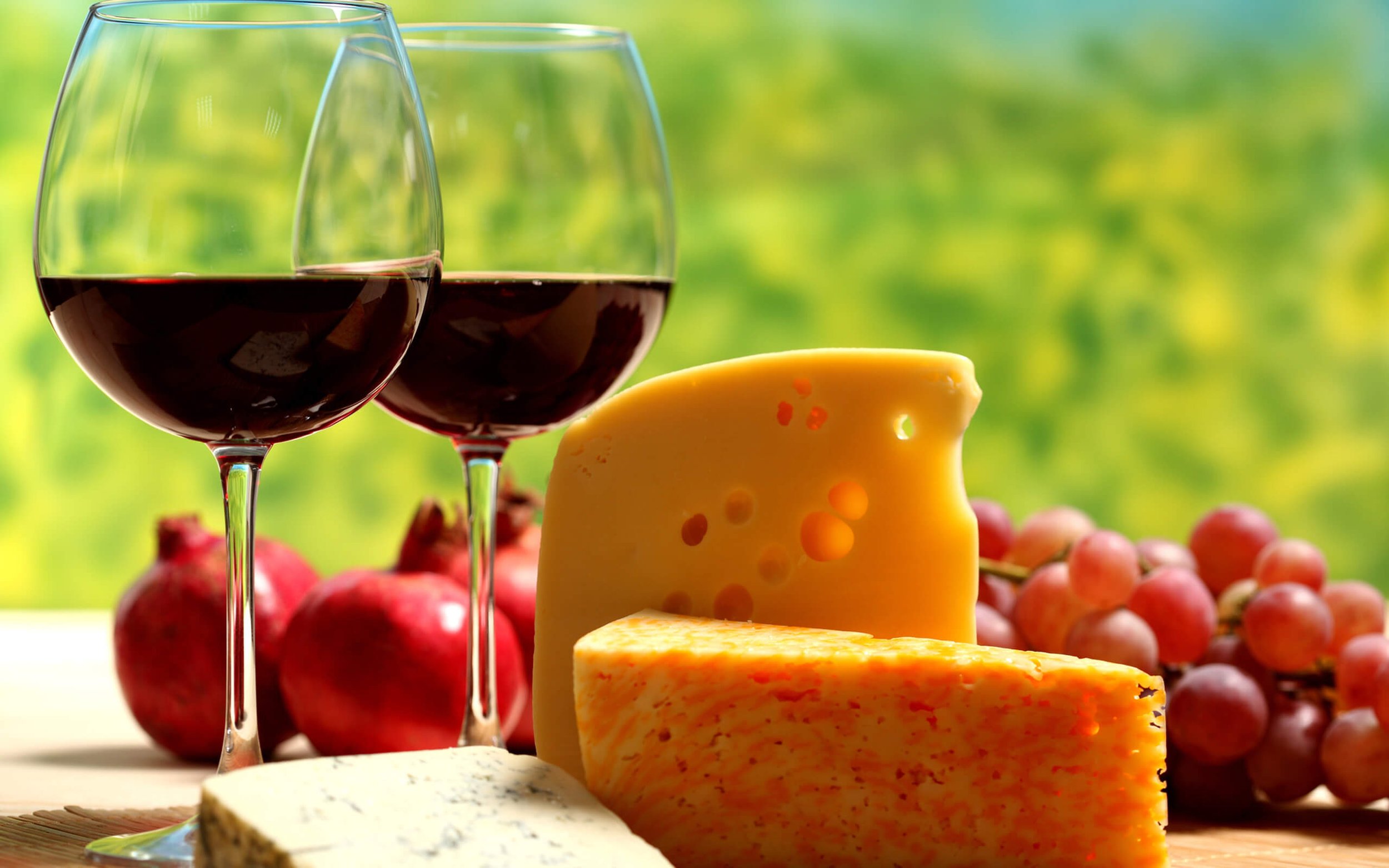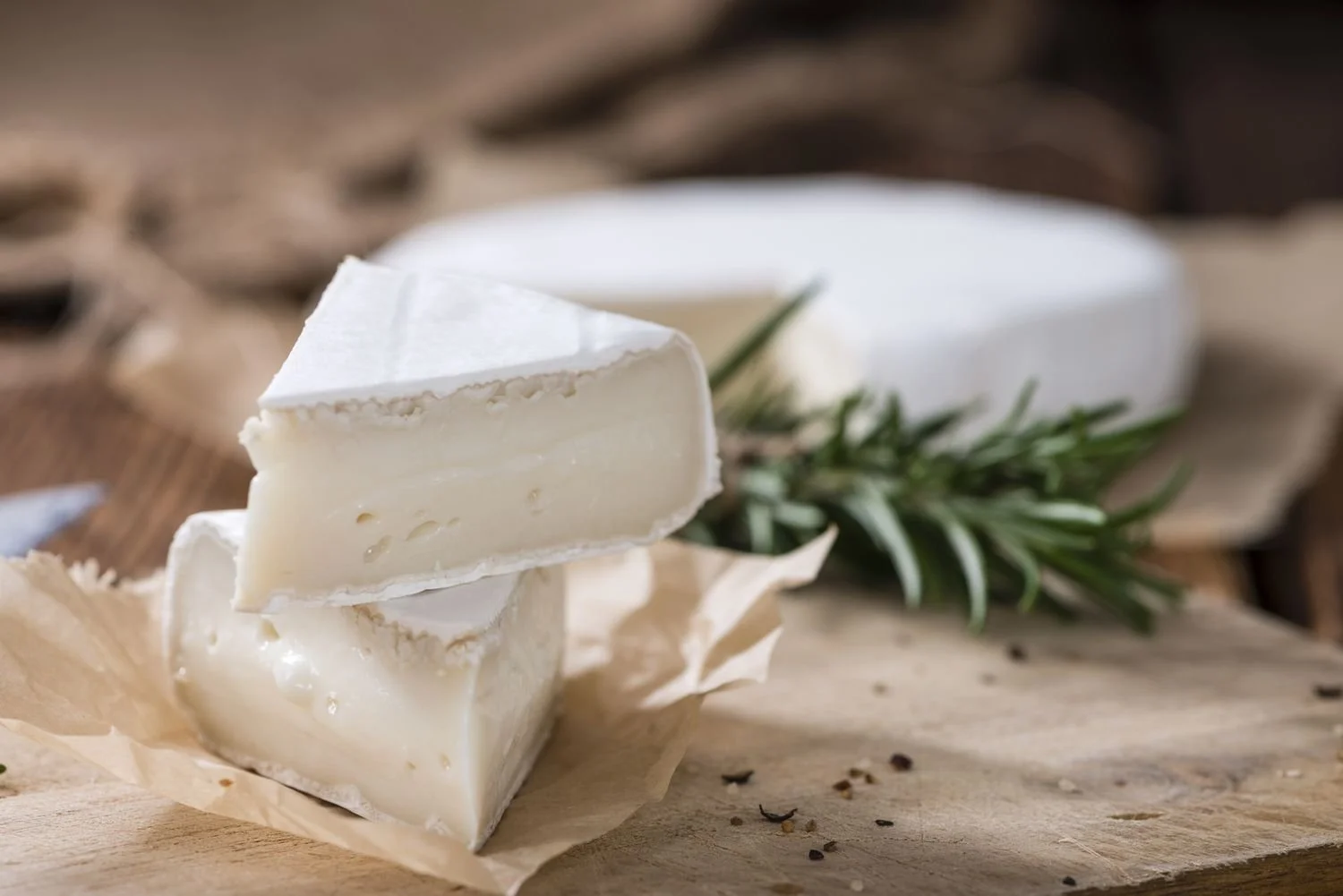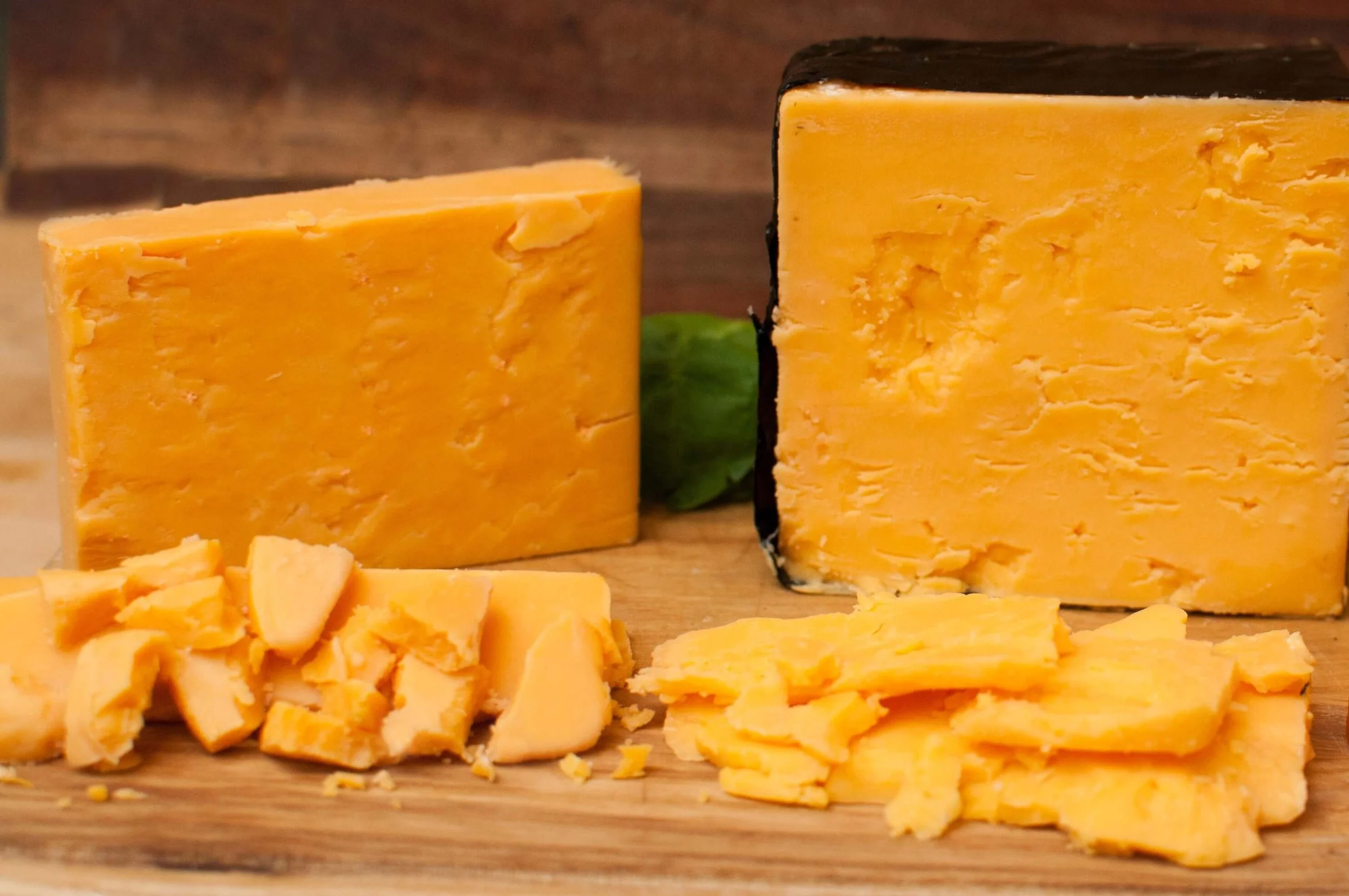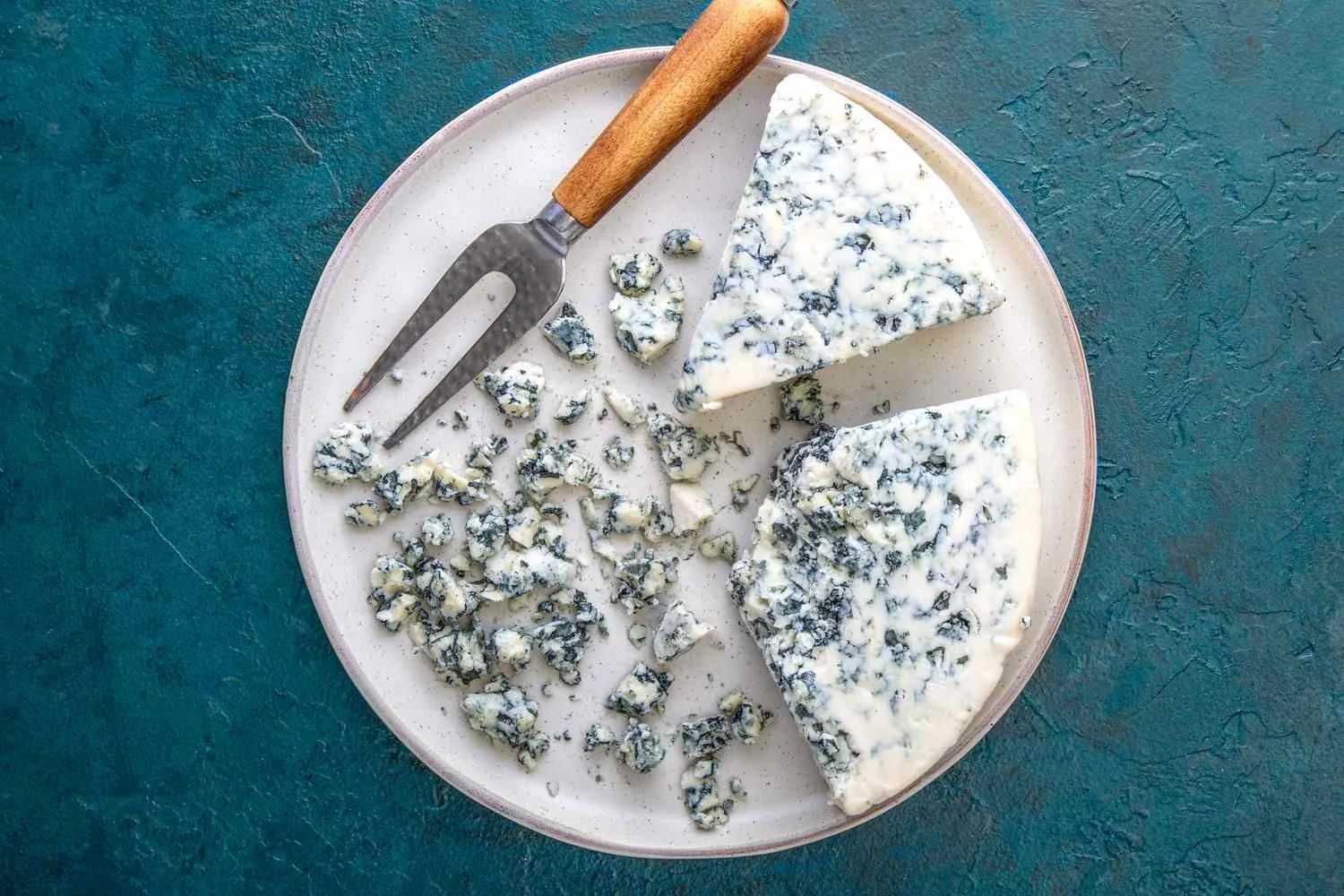Texas Cheese to Elevate Your Next Wine Tasting Experience
When it comes to wine tasting, the perfect pairing can enhance the flavors and create a truly memorable experience. While France and Italy often come to mind as cheese (how long does cheese last?) destinations, Texas has emerged as a surprising cheese (What wine goes well with cheese?) haven, producing a wide variety of artisanal cheeses.
In this article, we will explore the world of Texas cheese and discover the best options to bring to your next wine tasting. From creamy bries to tangy blues, Texas offers a diverse range of flavors that can complement and elevate your wine selections.
The Rise of Texas Cheese
In recent years, Texas has witnessed a remarkable growth in its artisan cheese industry. Factors such as a favorable climate, diverse dairy farms, and the influence of local cheesemakers have contributed to this rise. The state's cheesemakers have embraced traditional European techniques while incorporating local flavors and ingredients, resulting in a unique cheese culture that reflects the spirit of Texas.
Texas Cheese Varieties
Brie
Brazos Valley Cheese
Texas brie is a creamy and buttery cheese with a slightly tangy flavor. Its velvety texture makes it an excellent pairing for medium-bodied red wines or crisp white wines with fruity undertones.
Brazos Valley Cheese's award-winning Brie is crafted from raw cow milk and aged for 60 days, resulting in a creamy and rich texture. It features a thin, edible, bloomy rind that surrounds a velvety, yellow center. The cheese offers a distinctive bite and a pronounced finish that lingers on the palate.
Wine Pairing Suggestions:
Brie cheese is a versatile cheese that pairs well with a variety of wines. Here are some popular wine pairings that complement the flavors and textures of Brie:
Champagne/Sparkling Wine: The effervescence and acidity of Champagne or other sparkling wines cut through the creamy richness of Brie, creating a refreshing and balanced combination.
Chardonnay: A buttery and oaky Chardonnay can enhance the creamy and velvety texture of Brie, offering a harmonious pairing. Look for Chardonnays with balanced acidity to prevent overpowering the cheese.
Pinot Noir: The light to medium body, fruity flavors, and low tannins of Pinot Noir make it an excellent match for Brie. The wine's red fruit notes and earthy undertones complement the cheese's creamy and mushroom-like flavors.
Beaujolais: A light-bodied and fruity red wine like Beaujolais or Beaujolais Nouveau can be a delightful pairing with Brie. The wine's vibrant berry flavors and soft tannins complement the cheese without overpowering its delicate flavors.
Sauternes: Brie and sweet dessert wines like Sauternes create a heavenly combination. The rich and complex flavors of Sauternes, with notes of honey, apricot, and botrytis, complement the creamy and slightly tangy profile of Brie.
Rosé: A dry or off-dry rosé with its refreshing acidity and delicate fruit flavors can provide a lovely contrast to the creamy texture and subtle flavors of Brie. Opt for a rosé with a medium body to ensure it stands up to the richness of the cheese.
Riesling: The off-dry or slightly sweet profile of Riesling can balance the creamy and slightly salty nature of Brie. Look for Rieslings with good acidity to provide a refreshing and complementary pairing.
Remember, personal preferences and variations in wine styles can influence the pairing experience. It's always a good idea to experiment and find your own favorite wine and Brie combinations by tasting and exploring different options.
Cheddar
Veldhuizen Cheese Shoppe
Texas cheddar cheese can exhibit a wide range of flavors, from mild and creamy to sharp and tangy. It often has a firm and crumbly texture, although some variations may be more smooth and melt-in-your-mouth.
Local Texas cheese producers take pride in their craft and often emphasize the use of high-quality local milk to create cheddar cheese with distinct regional characteristics. Some Texas cheddar cheeses may incorporate unique flavors such as jalapeno, smoked, or infused with local herbs and spices, showcasing the diverse culinary traditions of the state.
Veldhuizen Cheese, known for its artisanal cheese production, offers a variety of cheddar cheeses, including their Texas Gold Cheddar. This particular cheddar is aged twice as long as their Classic Cheddar, resulting in a slightly sharper flavor profile. The cheese boasts a smooth texture and is known for its great flavor. Veldhuizen Cheese's Texas Gold Cheddar is a popular choice among cheese enthusiasts, offering a delightful and satisfying cheese experience.
Wine Pairing Suggestions:
When it comes to pairing wine with Texas cheddar, there are several options that can complement its flavors and textures. Here are a few wine pairings that can enhance your enjoyment of Texas cheddar:
Cabernet Sauvignon: The bold and robust character of Cabernet Sauvignon can stand up to the rich and slightly sharp flavors of Texas cheddar. The wine's dark fruit notes and firm tannins create a harmonious balance with the cheese.
Zinfandel: Zinfandel, with its ripe berry flavors, hints of spice, and moderate tannins, can provide a pleasant pairing with Texas cheddar. The wine's fruit-forward profile complements the cheese's tanginess and creamy texture.
Malbec: This medium to full-bodied red wine, with its dark fruit flavors, velvety texture, and soft tannins, can be a delightful match for Texas cheddar. The wine's richness and smoothness complement the cheese's flavors and mouthfeel.
Syrah/Shiraz: Syrah or Shiraz, with its bold black fruit flavors, hints of black pepper, and robust structure, can create a dynamic pairing with Texas cheddar. The wine's intensity and spiciness can enhance the cheese's flavor complexity.
Chardonnay: If you prefer white wine, a buttery and oaky Chardonnay can complement the creamy and smooth texture of Texas cheddar. Look for Chardonnays with moderate acidity to balance the richness of the cheese.
Viognier: Viognier, with its floral and stone fruit aromas, can provide an interesting contrast to the flavors of Texas cheddar. The wine's aromatic profile and medium body make it a refreshing choice when paired with the cheese.
Rosé: A dry or off-dry rosé with its vibrant acidity and red fruit flavors can offer a refreshing and versatile pairing with Texas cheddar. Look for rosés with a medium body to ensure they can stand up to the cheese's flavors.
Remember, personal preferences and variations in wine styles can influence the pairing experience. Feel free to experiment and explore different wine options to find your perfect combination with Texas cheddar.
Blue Cheese
River Whey Creamery
Blue cheese is a type of cheese that is characterized by the presence of blue or green veins running through it. These veins are formed by the growth of specific mold cultures, typically Penicillium roqueforti or Penicillium glaucum, which are introduced during the cheese-making process. The mold contributes to the cheese's unique flavor and creates a tangy, sometimes salty, and often pungent taste profile.
Texas blue cheeses (What wine goes well with blue cheeses?) are made using a variety of milk sources, including cow's milk, sheep's milk, or goat's milk. Each milk type imparts its own distinct flavors and textures to the cheese. The cheese-making process involves curdling the milk, draining the whey, and introducing the mold cultures. The cheese is then aged for a specific period, during which the mold develops and matures, resulting in the characteristic blue veins.
River Whey Creamery's Whey Blue® is an exciting addition to their lineup. This full cream, raw milk blue cheese is crafted in the style of creamy French blue cheeses, but with the unique terroir derived from Texas milk. Aged for 60 to 90 days, Whey Blue® offers a delightful complexity that will captivate your taste buds.
This cheese presents a beautiful combination of aromas, with hints of toasted biscuits adding a comforting element to the overall experience. The blue veining throughout the cheese provides a subtle yet distinct flavor that adds depth to each bite.
Wine Pairing Suggestions:
When it comes to pairing blue cheese with wine, there are a few general guidelines to consider. Blue cheese typically has strong, pungent flavors and a creamy texture, which can be balanced and complemented by certain wines. Here are some popular wine pairings that work well with blue cheese:
Port: Port wine, particularly a sweet and fortified variety like Ruby or Tawny Port, is a classic pairing with blue cheese. The richness and sweetness of Port harmonize with the bold flavors of the cheese, creating a delightful combination.
Sauternes: This French dessert wine from the Sauternes region is known for its luscious sweetness and complex flavors. Its honeyed notes and balanced acidity make it an excellent choice to pair with blue cheese, as they complement and enhance each other.
Late-Harvest Riesling: A late-harvest Riesling with its natural sweetness, vibrant acidity, and fruity flavors can offer a refreshing contrast to the saltiness and intensity of blue cheese. Look for a Riesling with some residual sugar to balance the flavors.
Cabernet Sauvignon: The bold and structured nature of Cabernet Sauvignon can stand up to the strong flavors of blue cheese. The wine's tannins and dark fruit characteristics provide a counterpoint to the cheese's creaminess and tanginess.
Syrah/Shiraz: Syrah or Shiraz, with their rich fruit flavors, peppery notes, and robust structure, can pair well with blue cheese. The wine's intensity and spice can complement the cheese's pungent flavors and creamy texture.
Madeira: Madeira is a fortified wine with a unique caramelized and nutty character. Its richness and complexity make it a lovely partner for blue cheese, enhancing the cheese's savory qualities.
Dessert Wines: Other dessert wines like Moscato d'Asti, Tokaji, or Pedro Ximénez Sherry can also be enjoyable pairings with blue cheese. These wines provide a touch of sweetness and various flavor profiles that complement the cheese.
Remember, personal preferences and the specific characteristics of the blue cheese can influence the wine pairing experience. It's always a good idea to experiment and find the combinations that suit your taste preferences.
Chevre
Pure Luck Farm & Dairy
Texas chevre refers to a type of cheese made in Texas that follows the traditional French method of crafting chevre, which is a fresh and creamy goat cheese. Texas has a growing artisanal cheese industry, and many cheesemakers in the state produce high-quality chevre using locally sourced goat milk.
Pure Luck Farm's fresh chevre is a pasteurized goat cheese made in Texas. It has a unique basket shape and a light, tangy flavor without being overly goaty. The cheese melts in your mouth and comes in various flavors, including Plain, Mixed Herb, Cracked Black Pepper, Anaheim Chili, and June's Joy. This versatile cheese is found on menus across Houston, Austin, and beyond, and can be enjoyed on its own or used in various dishes. Pure Luck's fresh chevre represents the quality and craftsmanship of Texas cheesemakers.
Wine Pairing Suggestions:
When it comes to wine pairings for chèvre, there are several options to consider. Here are some general guidelines:
Sauvignon Blanc: Sauvignon Blanc is a classic pairing with chèvre. The wine's crisp acidity and herbaceous notes complement the tanginess of the cheese. Look for a Sauvignon Blanc with citrus and grassy flavors to enhance the pairing.
Chardonnay: Chardonnay can also work well with chèvre, especially if it has bright acidity and moderate oak influence. Choose a Chardonnay with flavors of green apple, lemon, or tropical fruits to balance the creaminess of the cheese.
Rosé: A dry and fruity rosé can be a refreshing match for chèvre. The wine's vibrant acidity and red fruit flavors provide a pleasant contrast to the tanginess of the cheese. Look for rosés made from grapes like Grenache or Syrah for a well-rounded pairing.
Light-bodied Red Wines: Some light-bodied red wines can complement chèvre, especially if they have low tannins and bright acidity. Pinot Noir, Beaujolais, or Gamay can work well, as they offer fruity flavors and a lighter structure that won't overpower the delicate flavors of the cheese.
Sparkling Wine: Sparkling wines like Champagne, Prosecco, or Cava can be a delightful pairing with chèvre. The effervescence and acidity of sparkling wines can cleanse the palate and cut through the creaminess of the cheese.
Sancerre: Sancerre, a white wine from the Loire Valley in France made from Sauvignon Blanc, is often recommended with chèvre. Sancerre wines tend to have vibrant acidity, citrus flavors, and mineral notes that complement the tangy flavors of the cheese.
Ultimately, personal preferences play a significant role in wine and cheese pairings. It's a good idea to experiment with different wines and chèvre varieties to find the combinations that suit your taste preferences. Additionally, consider other accompaniments such as crusty bread, fresh fruits, or honey to enhance the pairing experience.
Gouda
Eagle Mountain Farmhouse
Gouda is a popular Dutch cheese known for its smooth and creamy texture, mild flavor, and characteristic sweet and nutty taste. While Gouda is traditionally associated with the Netherlands, it is also produced in various other countries, including the United States.
Texas Gouda cheeses can vary in flavor profiles, ranging from mild and buttery to more aged and robust. Some cheesemakers may experiment with different aging times and techniques, resulting in variations in taste and texture. The cheese can have a creamy, semi-soft texture when young, and develop a firmer and drier texture as it ages.
Made in Lipan, Texas, Gouda from Eagle Mountain Farmhouse has a nutty and slightly sweet gouda that is aged to perfection. Its caramel undertones and smooth texture make it a versatile cheese that can be paired with a wide range of wines.
Wine Pairing Suggestions:
When it comes to pairing Gouda cheese with wine, there are several options to consider depending on the age and flavor profile of the Gouda. Here are some general guidelines for Gouda wine pairings:
Young Gouda: Young Gouda cheeses are typically mild, creamy, and slightly sweet. They pair well with light to medium-bodied white wines such as Chardonnay, Sauvignon Blanc, or Riesling. The crispness and acidity of these wines complement the creaminess of the cheese without overpowering its delicate flavors.
Aged Gouda: Aged Gouda develops a firmer texture and more pronounced flavors, including caramel and nutty notes. These cheeses can stand up to bolder wines, such as medium to full-bodied reds like Cabernet Sauvignon, Merlot, or Zinfandel. The robust flavors of the wine can match the intensity of the aged Gouda, creating a harmonious pairing.
Sweet Wines: Gouda, particularly aged Gouda, can also be paired with sweet wines like Port, Madeira, or Late Harvest Riesling. The sweetness of these wines complements the rich and nutty flavors of the cheese, creating a delightful contrast.
Sparkling Wine: Sparkling wines, such as Champagne or Prosecco, can be surprisingly versatile with Gouda. The effervescence and acidity of sparkling wines can cut through the richness of the cheese, providing a refreshing and palate-cleansing effect.
Fortified Wines: Fortified wines like Sherry or Marsala can also be enjoyable with Gouda. The complex flavors and higher alcohol content of these wines can complement the depth and intensity of aged Gouda.
It's worth noting that personal preferences and the specific characteristics of the Gouda cheese can influence wine pairings. Experimentation is encouraged to find the combinations that best suit your taste. Additionally, consider accompanying Gouda with complementary accompaniments such as fruit, nuts, or crusty bread to enhance the overall tasting experience.
If you're curious about Texas cheese or if you're looking for a new type of cheese to try, TexasRealFood discusses the different types of Texas cheese and where you can find them.
Wine and Cheese Pairing Tips
Consider Intensity
When pairing wine and cheese, it's essential to match the intensity of flavors. Mild cheeses like brie or chevre work well with lighter wines, while stronger cheeses like cheddar or blue cheese can stand up to bolder, more robust wines.
Complement or Contrast
Pairing cheese with wine can involve either complementing or contrasting flavors. Complementary pairings bring out similar flavors in both the cheese and wine, while contrasting pairings create a harmonious balance of contrasting tastes.
Texture Matters
Consider the texture of both the cheese and wine. Creamy cheeses like brie or chevre can be beautifully balanced by sparkling wines, while hard cheeses like cheddar or gouda can be complemented by tannic red wines.
Experiment and Explore
Wine and cheese pairing is subjective, and personal preferences play a significant role. Don't be afraid to experiment and explore different combinations to find your own unique favorites.
Where to Find Texas Cheese
When it comes to finding the best Texas cheese, local farmer's markets are excellent places to discover a wide variety of artisanal cheeses crafted by local producers. Here are a few examples of notable farmers markets in Texas where you can find exceptional Texas cheeses:
Dallas Farmers Market (Dallas, Texas): The Dallas Farmers Market is a bustling market that features a diverse range of vendors, including several cheese producers. Look out for vendors like Mozzarella Company, which offers handcrafted, award-winning cheeses like fresh mozzarella, goat cheese, and ricotta. You may also find other local cheesemakers showcasing their unique creations.
SFC Farmers’ Market Downtown (Austin, Texas): The Austin Farmers Market, also known as the Sustainable Food Center Farmers Market, is a popular destination for food enthusiasts. Local cheese producers like Dos Lunas Artisan Cheese and CKC Farms offer their artisanal cheeses made from goat's milk. Dos Lunas specializes in small-batch, aged cheeses (What wine goes well with aged cheeses?), while CKC Farms produces fresh and flavored goat cheeses.
Pearl Farmers Market (San Antonio, Texas): The Pearl Farmers Market in San Antonio is known for its focus on local and sustainable products. At this market, you can find vendors like CKC Farms and River Whey Creamery. River Whey Creamery offers a variety of handcrafted, farmstead cheeses made from cow's milk, including their popular raw milk cheddar.
Houston Farmers Market (Houston, Texas): The Houston Farmers Market, formerly known as Canino Produce Company, is a bustling market with a wide selection of vendors. Look for cheese vendors like Houston Dairymaids, a specialty cheese shop that sources and showcases artisanal cheeses from around Texas and beyond. They offer a curated selection of Texas cheeses, allowing you to explore and discover the best the state has to offer.
Visiting these farmers markets provides an opportunity to meet the cheesemakers themselves, learn about their production methods, and sample their cheeses. The offerings may vary depending on the season and the participating vendors, so be sure to check the market schedules and plan your visit accordingly
Texas Cheese and Wine Tasting Party Ideas
Organizing a Texas cheese and wine tasting party can be a delightful way to explore the diverse flavors of the Lone Star State. Here are some ideas to make your tasting experience truly memorable:
Cheese and Wine Pairing Station
Set up a tasting station with a selection of Texas cheeses, accompanied by a variety of wines that guests can sample and pair at their leisure.
Expert Guidance
Consider inviting a local cheesemaker or sommelier to provide insights and recommendations on the best cheese and wine pairings. Their expertise can enhance the overall experience and provide valuable knowledge about Texas cheese.
Recipe Creations
Encourage guests to get creative and experiment with different flavor combinations. Provide a variety of accompaniments such as fruits, nuts, and crackers to inspire unique pairings.
Blind Tasting
To make the experience more interactive, conduct a blind tasting where guests have to guess the cheese and wine pairings correctly. This activity can be both educational and entertaining.
Explore the world of wine through TexasRealFood's Promptuary, which provides a wealth of information on wine, including trivia, a buying guide, and insights into wine production and farming in Texas.
Conclusion
As the Texas cheese industry continues to flourish, it presents an exciting opportunity for wine enthusiasts to explore new and unique flavors. Whether you prefer a creamy brie or a tangy blue, Texas offers a wide selection of artisanal cheeses that can elevate your next wine tasting experience. By considering the flavor profiles, textures, and personal preferences, you can create perfect pairings that enhance the enjoyment of both wine and cheese. So gather your favorite Texas cheeses, uncork a bottle of your preferred wine, and embark on a journey of flavors that celebrate the best of Texas. Cheers to the delightful union of Texas cheese and wine.









